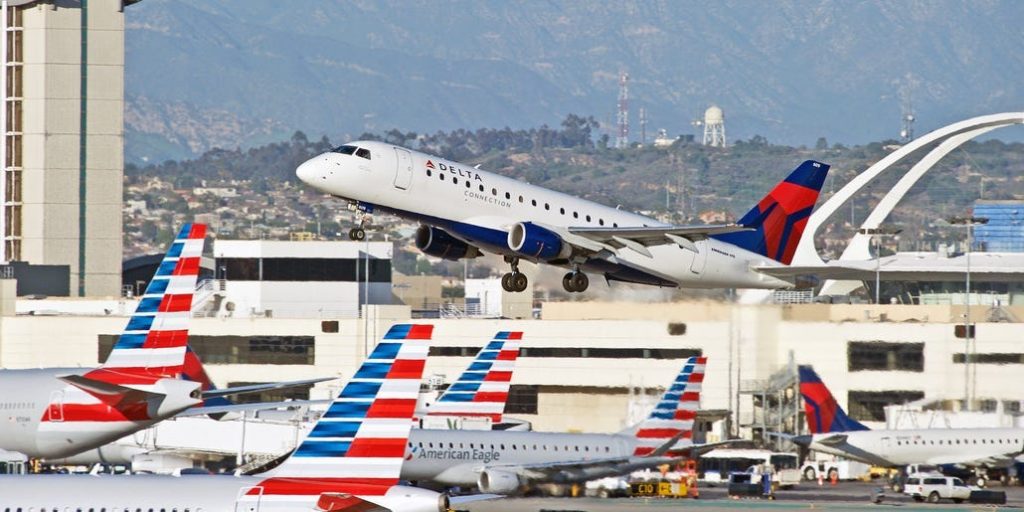- When the federal payroll support program ran out in 2020, airlines moved to downsize their workforces.
- Most furloughed workers, but Delta offered buyouts targeted at its highest-earning employees.
- As travel rebounded, the hiring spree gave Delta a relatively younger workforce, leading to significant savings.
Summer travel is back in force and airlines are racing to hire workers to meet demand.
As major US airlines navigate a tight labor market and rampant staffing shortages, many are now paying more per employee than before the pandemic. Delta, by contrast, has seen its median pay tick down, even as it staffs up — saving the company a bundle of cash on payroll in recent quarters.
Delta's savings are largely the result of a peak pandemic staffing strategy that focused on buyouts rather than furloughs, which is now allowing the airline to hire younger, less experienced staffers at cheaper salaries.
Delta CEO Ed Bastian described the financial phenomenon as a "juniority benefit" on an earnings call last fall.
"Many of our most experienced employees had chosen to retire and that's opened up opportunities for younger people, so there is a benefit to that," he said.
Delta's approach set it apart from top competitors like American and United. In September 2020, when the federal payroll support program for airlines was running out, airlines faced a choice. Those that received funding were barred from laying off or furloughing workers, but they could ask people to voluntarily retire early.
Delta acted early and elected to offer buyouts to roughly one-fifth of its workforce, or nearly 20,000 workers, including 2,000 pilots. Meanwhile, American and United waited and relied more heavily on furloughs once funding restrictions were lifted in October.
Delta's 4,273 buyouts for flight attendants outnumbered the roughly 2,800 each from American and United, according to internal tracking data from the Association of Flight Attendants. As a percentage of its workforce, Delta's buyout was even larger, since the company has fewer total workers than American.
When a second round of funding arrived, American and United were required to rehire furloughed workers, while Delta hunted for new talent as travel rebounded faster than expected. In many cases, these new hires were younger, and therefore cheaper, than before.
And Delta has been hiring: the company reported adding 11,000 workers in 2021. When 3,000 positions for flight attendants were listed last year, the company said it received nearly 40,000 applications and had to shut down its portal.
One way this has helped the company's finances is there are now more pilots with less than ten years of experience than with more than 15 years, Cowen airlines analyst Helane Becker told Insider.
Still, some of the initial savings on higher-paid employees is now being offset by recent pay bumps as the company battles for talent among flight attendants and ground crews, Becker added. (Delta pilot compensation is largely set by a union contract.)
In the two years before the pandemic, Delta's reported median employee wage was higher than that of United or American, peaking at $118,000 compared with $74,700 and $61,100, respectively, in 2019.
In 2021, Delta was squarely between its competitors at $70,200, compared with $78,200 for United and $62,700 for American.
Those numbers could start to climb back up as Delta hires thousands more pilots, flight attendants, and mechanics this year. A successful union drive by the Association of Flight Attendants could also lead to pay increases at the airline (Delta has the lowest unionization of the major carriers).
For all the scheduling woes frustrating passengers, the company seems to be keeping investors happy and opening up more job opportunities in the industry for younger workers.

